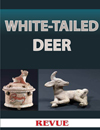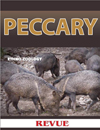AutoSafari Chapin is a place for families to bring their children to experience animals and birds. Most of the creatures are out in the open (meaning not in cages). You drive your car through the extensive property, as though you were in Africa driving through the Serengeti. The difference is that here in Guatemala you drive your own car, so the experience is more personal.
AutoSafari Chapin is an ideal place to photograph toucans
Keel-billed Toucan, Ramphastos sulfuratus
I have been interested in toucans for decades since in the 1970’s there was a restaurant in Flores, El Peten, which had a live toucan loose in the restaurant. It hopped from table to table.
But toucans are not easy to photograph out in the forests. So to photograph a toucan, at Parque Nacional Tikal or at Las Guacamayas research station westward in El Peten area of Guatemala, we would need a 400mm, 500mm, or 600mm prime lens (zoom lenses are not as sharp; not as good a quality as a non-zooming “prime” lens). We are seeking funding so we can have access to the newest version “II” telephoto lenses of Canon.
But in the meantime, I found that the best place in my 50 years of trying to photograph the native toucan, in Guatemala is AutoSafari Chapin. They have two toucan cages: one for the Guatemalan species, the Keel-billed Toucan, Ramphastos sulfuratus, the other for a toucan probably from Brazil.
On a recent field trip to do photography of the important birds of Guatemala the person assigned to assist us during our research photography let me into the toucan cage.
The nearest toucan did a remarkable dance: I assume it was showing me that it was the Alpha male and that I was now inside his territory (and thus I had to be deferential to me). I hope it was not a mating dance! It was possible to take photographs that were so much better than any out in the wild (until we have a good Canon or Nikon telephoto lens).
I would like to go back and ask permission to put a background cloth (behind the toucan) so that the photos would not all show the wire cage metal behind the bird). In any event, this is a great place to see toucans up close (even if you are not inside the cage).
There are several pleasant scarlet macaws perched on various tree limbs, so you can get relatively close to photograph them. We got great photos of macaws on our most recent trip during 2014.
AutoSafari Chapin as a place to study animals of Guatemala
This is an ideal place to photography spider monkeys, since you can get relatively close. I am not sure all these monkeys are Guatemalan varieties; some may be lower Central America (I need to double-check).
For both species of peccary there are over 50 of each species to study.
Peccary are shown in Classic Maya art in several manners:
- Peccary heads as supports for Early Classic tetrapods
- full figured peccaries with a standardized deity riding the peccary. All together usually as three-dimensional lid handles or three-dimensional ceramic containers. I show one of these in my PhD dissertation.
- Peccaries in various scenes on Late Classic Maya vases.
The white-tailed deer are plentiful at AutoSafari Chapin. Ironically you can get closer to them in a car than you can on foot. So best way would perhaps be to photograph them from the bed of a pick-up truck (we have not yet tried that).
Felines are in pens, since naturally you don’t want them wandering around as they would enjoy feasting on the deer and peccary and even on the crocodiles.
The iconography of all these animals in studies of Maya archaeology is an important field of study. Many of these animals are also shown as head variants for Maya hieroglyphs, so epigraphers could benefit from spending time here at AutoSafari Chapin.
We have mentioned AutoSafari Chapin when we write articles for REVUE magazine
About nine times a year we write articles on the flora and fauna of Guatemala for REVUE magazine. This magazine is distributed to hotels throughout Guatemala and adjacent countries. So thousands of tourists read this magazine (especially in Antigua Guatemala).
We have mentioned AutoSafari Chapin in several of our articles, indeed the next article is specifically about AutoSafari Chapin.
AutoSafari Chapin is also a good place to study plants
We have photographed Ceiba tree spines at AutoSafari Chapin many years ago. About four years ago we did more studies of Pachira aquatica here at AutoSafari Chapin.
Be sure you figure out a place to stay, as there are no longer any hotels nearby
This is a serious animal study location; it is not a resort and there are no hotels on the property nor nearby. Yes, of course there are hotels within 30 minute drive in Taxisco, and another hour (by ferry) in Monterrico, but the hotel closer to AutoSafari Chapin where we stayed in past years does not seem to be open any more.
Contact info for Autosafari Chapin, Guatemala
The web site is www.autosafarichapin.com
The telephone is 2222-5858. If calling from outside, 502 is simultaneously country code and city code both together (the two codes are always together, never separate).
Km. 87.5, highway to Taxisco (CA-2).
Open from 9:30 am to 5 pm Tuesday through Sunday inclusive. Monday closed (there is a lot of work at a zoo which can best be done when there are not so many cars and people to attend to).
On some special holidays of Guatemala or El Salvador, the park may be open on a Monday, but be sure to check in advance on their web site.
AutoSafari Chapin was founded by Roberto Berger Lenhoff and Ricardo Mata
Unfortunately I do not believe I met Roberto Berger, but I met the co-founder (Ricardo Mata) since the co-founder was the brother of my dentist, Dr Guillermo Mata (Billy Mata was the founder of the Museo Popol Vuh). His brother, Dicky Mata, as he was known to his friends, was a leading photographer in Guatemala. I can remember him telling me of raising his pet jaguar.
Updated late August 2015
Posted December 2, 2014

























